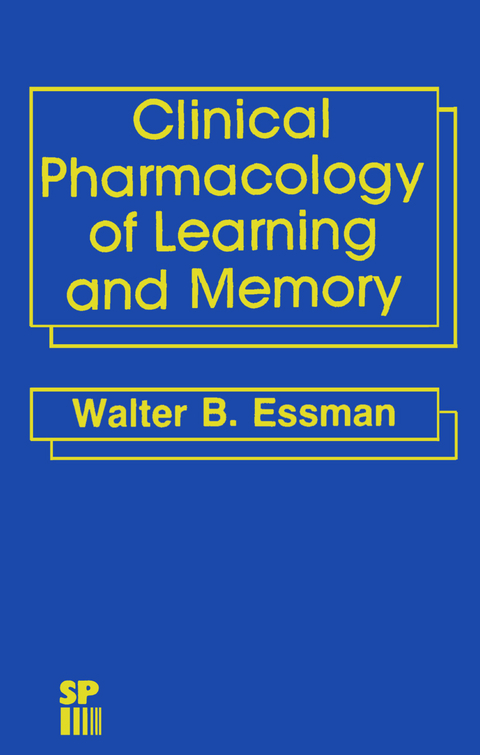
Clinical Pharmacology of Learning and Memory
Seiten
2012
|
Softcover reprint of the original 1st ed. 1983
Springer (Verlag)
978-94-011-9660-4 (ISBN)
Springer (Verlag)
978-94-011-9660-4 (ISBN)
The search for drugs to alter learning and memory processes in animals and man has its roots in mythology as well as the history of medicine. The use of plant alkaloids to improve memory was a recommendation of Benjamin Rush in his "Diseases of the Mind" (1812, P. 284), and the mysterious contents of lethe, a liquid capable of causing the erasure of earthly memories is found in Egyptian and Greek mythology, as well as described by Dante, remains a still-sought amnesic molecule. The facilitation of learning or improvement of memory has been claimed for several plant-derived substances including coca, chat, caffeine, and nicotine. Hypotheses concerning substances found in the brain and their presumed significance for learning or memory led to the development and use of agents that contained such substances. For example, as observed by William James (1892, P. 132), the emphasis, in Germany during the 1860's, upon phosphorus in the brain for cognitive functions gave rise to the suggestion that foods vii viii CLINICAL PHARMACOLOGY OF LEARNING AND MEMORY high in phosphorus content, such as fish, were good for brain function. Phosphorus-containing preparations were advocated for use in cases of poor memory, exhaustion, etc. , and though sometimes useful, probably were effective due to a non-specific stimulant effect. Whether the positive cognitive efficacy of non-specific CNS stimulants such as phosphorus, rosemary, lavender, cubeb berries, etc. were really very different from those investigated in animal experiments (Lashley, 1917) or those documented within recent decades remains to be explored.
1. Drug Interactions.- 2. Macromolecules in Learning and Memory.- 3. The Cholinergic System in Learning and Memory.- 4. Serotonin in Learning and Memory.- 5. Neuropharmacology in the Dysmnesias.- 6. Major Tranquilizers.- 7. Barbiturates and Sedatives.- 8. Mood Alterants.- 9. General Anesthetics.- 10. Ethanol.- 11. Stimulants.- 12. Nicotine.- 13. Procaine.- 14. Papaverine and Hydergine.- 15. Peptides.- Some Concluding Observations.- References.
| Zusatzinfo | 11 Illustrations, black and white; XVIII, 202 p. 11 illus. |
|---|---|
| Verlagsort | Dordrecht |
| Sprache | englisch |
| Maße | 152 x 229 mm |
| Themenwelt | Medizin / Pharmazie ► Medizinische Fachgebiete ► Neurologie |
| Medizin / Pharmazie ► Medizinische Fachgebiete ► Pharmakologie / Pharmakotherapie | |
| Medizin / Pharmazie ► Pharmazie | |
| ISBN-10 | 94-011-9660-5 / 9401196605 |
| ISBN-13 | 978-94-011-9660-4 / 9789401196604 |
| Zustand | Neuware |
| Haben Sie eine Frage zum Produkt? |
Mehr entdecken
aus dem Bereich
aus dem Bereich
interdisziplinäre Diagnose- und Behandlungsstrategien
Buch | Hardcover (2024)
Urban & Fischer in Elsevier (Verlag)
CHF 135,75
Material für visuell Lernende
Buch | Softcover (2023)
Kohlhammer (Verlag)
CHF 61,60


